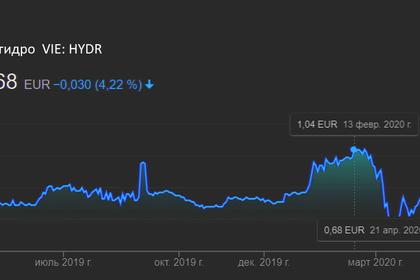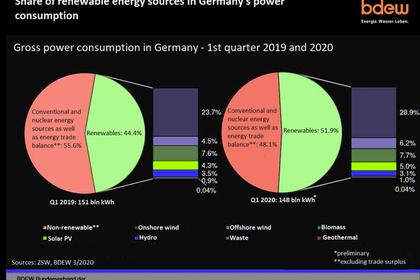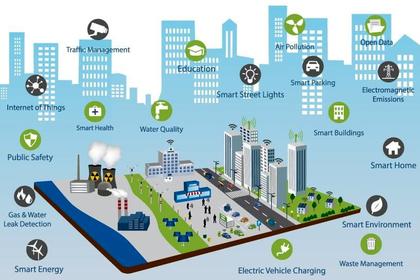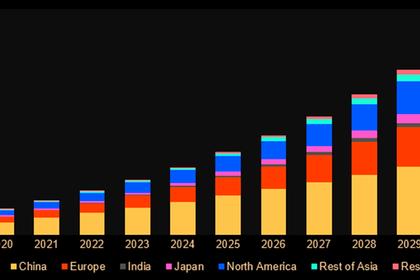
GLOBAL HVDC TRANSMISSION MARKET UP
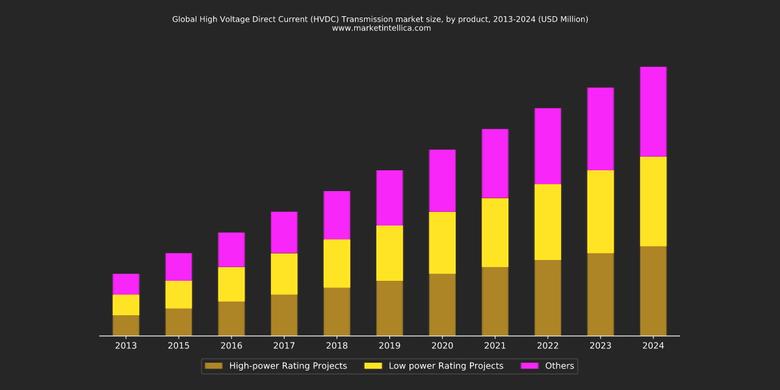
By Peter Key Freelance Writer, Editor, ConsultantLansdowne, Pa.
ENERGYCENTRAL - In most aspects of the rivalry between Thomas Edison and Nikola Tesla, Edison came out on top. That’s why, among other things, the trade group that represents U.S. investor-owned electric companies isn’t called the Tesla Electric Institute.
Where Tesla did prevail, however, was in the war of the currents, as the battle over whether alternating current or direct current would be dominant came to be called. Tesla and George Westinghouse favored AC; Edison preferred DC. And despite Edison’s attempts to prove that AC was dangerous, Tesla and Westinghouse won.
But although Edison is long dead, his favorite form of current is making a comeback, fueled by technological advancements and the growth of renewable energy. It’s most visible in the high voltage direct current transmission lines that are springing up around the globe as a cost-effective method of transporting electricity very long distances, such as from wind farms in remote locations to population centers hundreds of miles away. But HVDC also is used for submarine cabling and to link asynchronous grids.
In a 2018 report, Verified Market Research predicted that the global HVDC transmission market would have a compound annual growth rate of 7.2 percent from 2018 to 2025, growing from $7.52 billion in 2017 to $13.07 billion in 2025.
A Data Bridge Market Research report issued this month put the CAGR for the market at 7.5 percent between 2019 and 2026.
And a report issued in March by Indian research firm Mordor Intelligence said the market would have a CAGR of 11.18 percent between now and 2025. Mordor said the market's short-term growth would be fueled by the growing demand for energy and the growth of renewable power in the Middle East and Africa. Europe would continue to be the largest geographical market for HVDC transmission and submarine transmission systems would comprise the largest share of the market, in part because of the growth in power trading between countries, Mordor said.
HVDC has always been a more efficient way of transporting electricity over long distances than HVAC, as it has a smaller energy loss. Additionally, it only requires two conductors instead of three so HVDC transmission lines are cheaper to build than their AC counterparts, while their pylons are less obtrusive and their corridors take up less space.
Despite those advantages, HVDC didn’t catch on until recently largely because grids are AC and the cost of building the terminal stations that convert current from AC to DC and vice versa more than offset the savings resulting from the fewer conductors the technology required. ABB, which, along with Siemens and General Electric, are among the leading providers of HVDC equipment, says the point at which HVDC transmission lines become cheaper to build than AC ones ranges from 370 to 500 miles.
As a result, HVDC transmission lines were few and far between in the United States. When GE and Clean Line Energy announced their plans to collaborate on the Plains & Eastern Clean Line in 2016, the companies said the 720-mile project to bring wind power generated in the Oklahoma panhandle to the South and Southeast would be the first overhead HVDC project in the US in more than 20 years.
Clean Line Energy wound up selling the Plains & Eastern Clean Line to NextEra Energy Resources and its Grain Belt Express HVDC transmission project, which would bring wind power 800 miles from southwestern Kansas to Indiana, to Invenergy. NextEra hasn’t moved the Plains & Eastern Clean Line forward, at least publicly, while Invenergy is fighting battles over the Grain Belt Express in Missouri and is evaluating its options for the line in Illinois.
One HVDC line that is moving forward is the SOO Green HDVC Link, a 349-mile line that would bring wind and solar power from the Midcontinent Independent System Operator’s grid to the grid operated by PJM Interconnection. Unlike many other transmission projects, it’s drawing little opposition, probably because it’s going to be buried alongside a railroad track.
Outside the U.S., HVDC is steaming along, especially in Europe where it’s being used to link countries’ grids and connect offshore wind farms to the mainland.
For example, BritNed, a 160-mile HVDC submarine cable linking the grids of the UK and the Netherlands, has been in service since 2011 and the Nemo Link, an 87-mile HVDC submarine cable linking the grids of the United Kingdom and Belgium has been in service since January 2019.
Meanwhile, National Grid’s partner in BritNed, Dutch transmission systems operator TenneT, recently contracted manufacturers to develop a new type of submarine cable system for 2 gigawatt connections it plans to lay between offshore wind farms and the Netherlands and offshore wind farms and Germany.
Even larger HVDC projects could be on the horizon. BritNed, for instance, could wind up part of a European supergrid that would rely on HDVC to link the grids of European Union countries.
Australian developers, meanwhile, have proposed Sun Cable, which would involve building a giant solar farm in the country’s Northern Territory and shipping power via an HVDC cable from it to Singapore, where it would supply one fifth of the country’s power needs.
Supersized HVDC projects have even been proposed for the U.S., such as the Atlantic Wind Connection, an undersea transmission system that would link offshore wind farms from northern New Jersey to southern Virginia.
Some of these projects may seem overly ambitious, but if there was one thing that Edison, the late nineteenth century’s biggest DC proponent believed in, it was dreaming big.
-----
This thought leadership article was originally shared with Energy Central's Grid Professionals Community Group. The communities are a place where professionals in the power industry can share, learn and connect in a collaborative environment. Join the Grid Professionals Community today and learn from others who work in the industry.
-----
Earlier:
